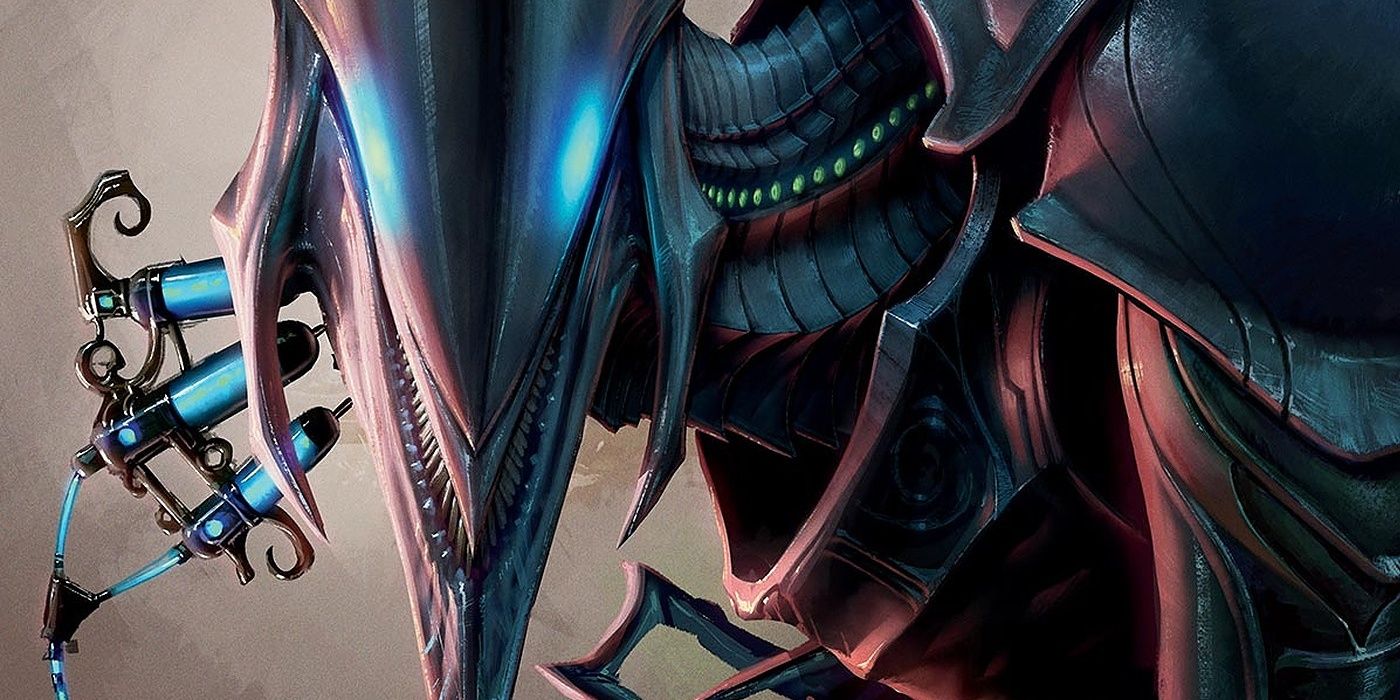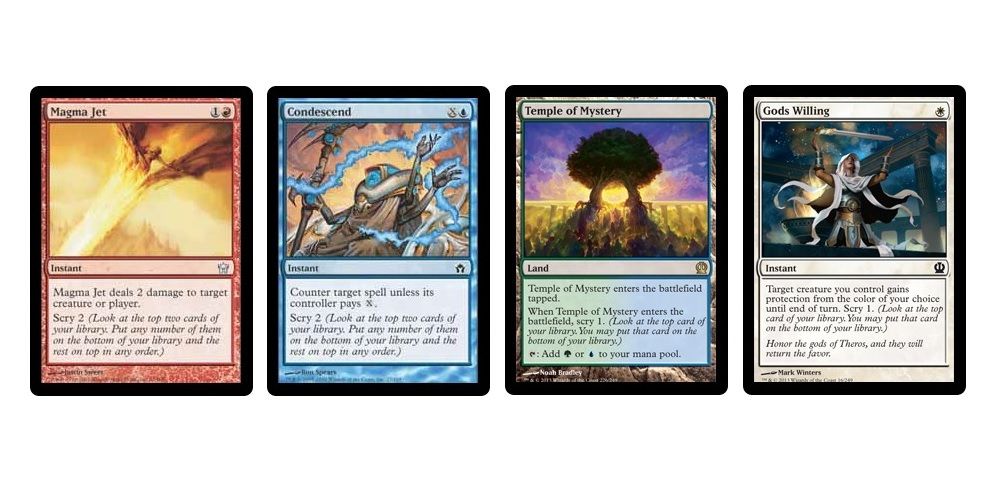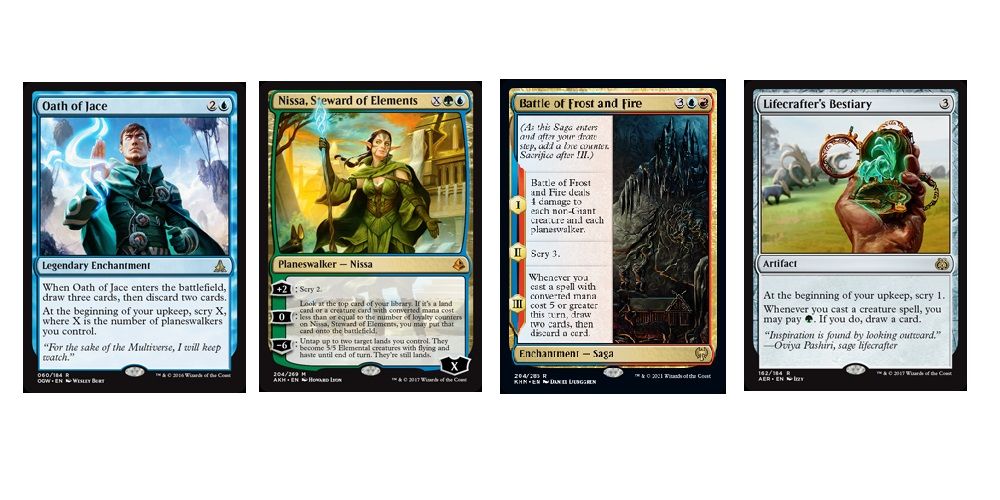Magic: The Gathering is a fantasy card game with a relatively straightforward set of core rules based on declaring attackers and blockers, casting spells in the two main phases of a turn, using the stack and more. The game's true depth and variety comes from the vast pool of cards, as well as the myriad mechanics, keywords and abilities that appear on them. Scry is a good example of this.
"Scry" is a term from many works of fantasy, and in M:TG terms, scrying allows a player to look at a few cards on the top of their deck and rearrange them as they like. Scry was added to the game in 2004's original Mirrodin block, but Wizards of the Coast and players alike wouldn't appreciate its true potential until several years later.
Scry's Earlier Forays in Magic: Fifth Dawn & Theros
The original Mirrodin block is now infamous for its distinctly overpowered artifact abilities, but not all of this block's effects were artifact-based. The third and last set, Fifth Dawn, had a WUBRG theme and scry to shake things up. Scry was an effect that could be stapled onto a variety of cards to boost their power a little, regardless of what the card actually does. In a way, scry acts like cantripping, with a cantrip effect being when a card has an effect, then draws a new card just because. In the Fifth Dawn set, scry mainly appeared as scry 2, and it was part of noteworthy cards like Magma Jet, Serum Visions and Condescend.
For years after that, scry remained an oddity of the Fifth Dawn set and the M11 core set -- but 2013 would change scry's fate for the better. The original Theros block was Greek-inspired, and among other effects, it brought back scry in full force, tying it thematically to the concept of Greek oracles predicting the future. Scry was stapled onto all manner of cards, including creatures and lands. Fortunately, scry's flavor can fit with any set, and its effect is not game-changing, meaning it's relatively safe to casually toss scry into a set.
Theros had a mega-cycle of rare lands with scry 1 when they enter the battlefield, such as Temple of Mystery and Temple of Malice. Cards like Gods Willing and Prognostic Sphinx also had scry. Most notably, while Fifth Dawn nearly always had the number 2 for scry, the Theros block mixed things up by using scry 1, scry 2 and even scry 3. Many cards simply had scry 1, so they wouldn't have to cost a lot more mana to balance things out. And the tale of scry did not end here.
How Scry Joined the Evergreen Club
Wizards of the Coast says that an "evergreen" mechanic can appear in absolutely any set, since its gameplay effects and flavor are flexible and generic enough to fit anywhere. Effects like trample, flying, deathtouch, first strike and haste are examples of this. Wizards will add more if all the factors are in a mechanic's favor. The prowess ability from the Khans of Tarkir block became evergreen after a point, and at roughly the same time, scry got the same treatment.
The concept of scrying is basic, allowing Wizards to incorporate it into any plane within M:TG's lore. The effect also isn't tied too heavily to particular themes, such as "graveyard matters" or "artifacts matter." What's more, scry is useful, but not game-breaking; a player can't simply overwhelm the opponent with scry and crush them. Scrying can help set up the game-winning play, but it is not the game-winning play itself.
It also helps that, conceivably, any color can scry, though blue mana gets the lion's share since the concept of seeing and manipulating the future is rather blue in nature. In games, scry can help players smooth out their draws to create more engaging and consistent gameplay, such as getting rid of excess lands or helping players dig through their library for a much-needed removal spell -- or a win-con or finisher. By now, scry is part of nearly every expansion and core set to varying degrees.
Finally, scrying was built into the game itself, regardless of which cards players used. The mulligan rules have changed more than once, and at some point, a player would mulligan as many times as they needed, then scry 1 before the game started. That player is at a disadvantage after losing a card or two before the game starts, so a free scry 1 can help balance things out a bit. The rules have since been updated, and the free scry 1 is now gone. Still, this proved how flexible and universal scrying is, and many players will agree that making scry evergreen changed the game for the better.



